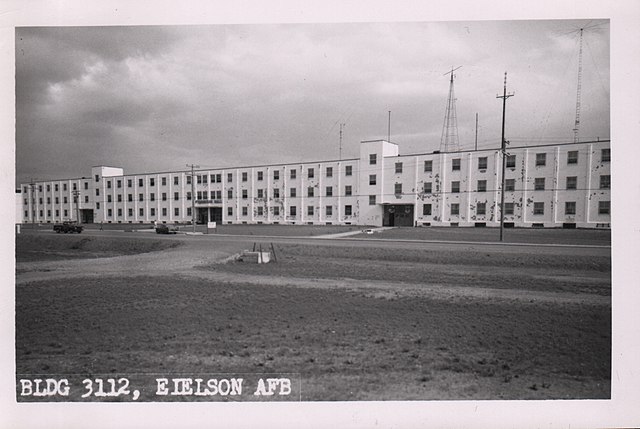The 343d Wing is an inactive United States Air Force unit. Its last assignment was with Pacific Air Forces at Eielson Air Force Base, Alaska, where it was inactivated on 20 August 1993. The unit was formed at Eielson as the 343d Composite Wing and activated in October 1981 to replace the 5010th Combat Support Group. It operated both fighter and forward air control aircraft. In 1991, it also became the administrator for periodic Exercise Cope Thunder operations, which moved to Alaska from the Philippines after the eruption of Mount Pinatubo resulted in the evacuation of units from Clark Air Base When the wing was inactivated, it was replaced at Eielson by the 354th Fighter Wing.
Two of the wing's A-10A Thunderbolt IIs over Alaska during Exercise Arctic Warrior in 1991
11th Fighter Squadron P-40 in Alaska, 1943
54th Fighter Squadron P-38
11th Fighter-Interceptor Squadron F-102
Eielson Air Force Base is a United States Air Force (USAF) base located approximately 26 miles (42 km) southeast of Fairbanks, Alaska, and just southeast of Moose Creek, Alaska. It was established in 1943 as Mile 26 Satellite Field and redesignated Eielson Air Force Base on 13 January 1948. It has been a Superfund site since 1989. Eielson AFB was named in honor of polar pilot Carl Ben Eielson.
An F-16 Fighting Falcon from the 18th Aggressor Squadron flies over Eielson AFB during 2009. The base's largest hangar, known as the "Thunderdome," is visible in the bottom left of the image.
Mile 26 Satellite Field (now Eielson AFB), 1945
Ptarmigan Hall in 1962, later renamed to Amber Hall
The flight line and Thunderdome hangar building at Eielson








